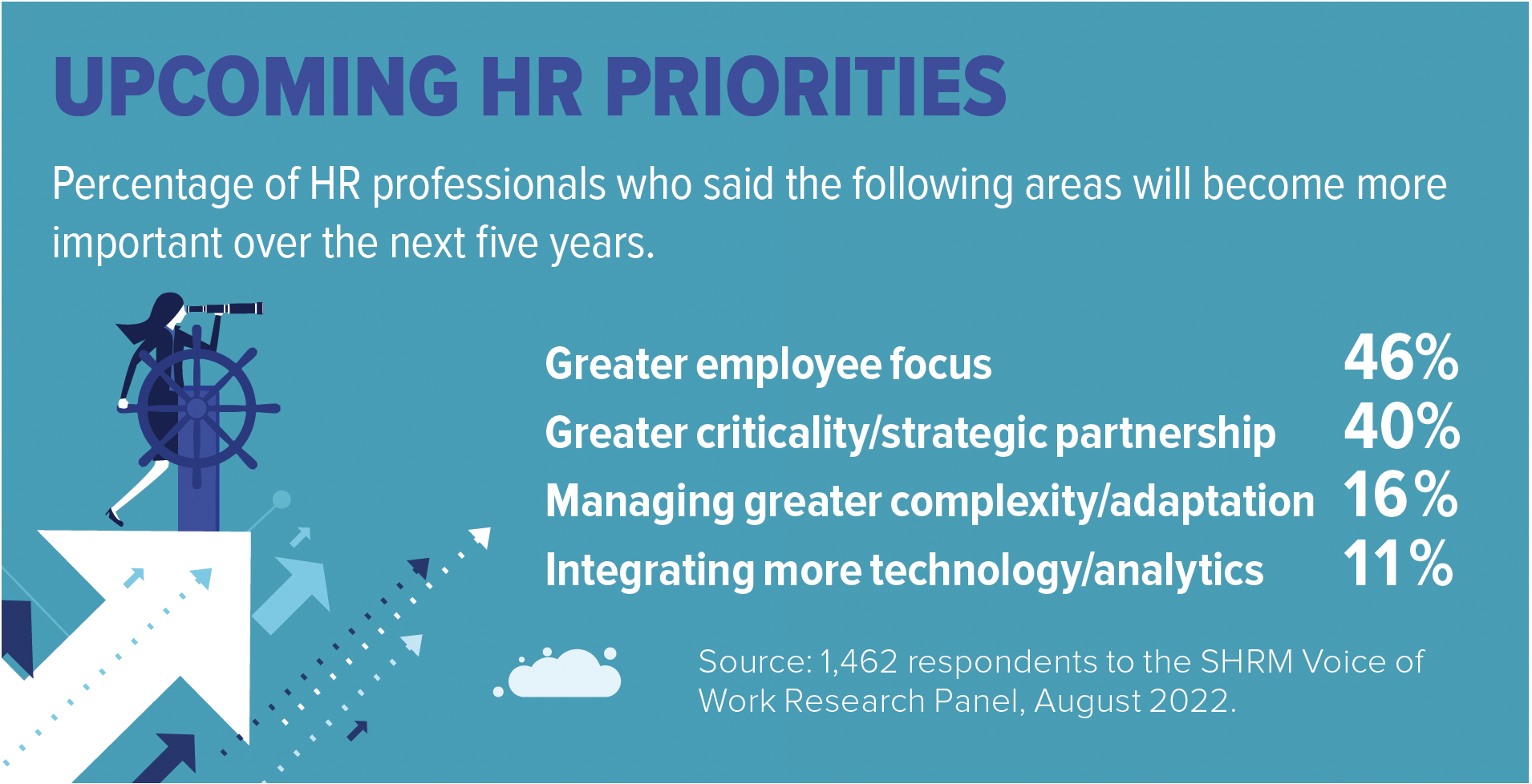
For 75 years, SHRM and HR professionals have worked together to drive historic change in the world of work. During that time, substantial workplace changes have occurred. While some of these transformations are still underway, HR professionals now have another destination entered into their GPS: a better employee experience.
This effort has gained momentum since the pandemic began, with HR often leading the charge. Almost half of HR professionals surveyed in August 2022 predicted a greater focus on employees within the next five years. Additionally, in February 2023, when asked to select what activities their organization’s HR department should prioritize, the top-ranked answer from HR professionals was “create a positive employee experience.”
We know HR wants to head in this direction, but how can we get there—or to other desired destinations—when the route to change can be bumpy?
Various estimates suggest that more than half of organizational change efforts fail. Although the reasons for failure are many, HR professionals are capable of taking the wheel and keeping change on track. When change involves employee experience, two critical goals emerge: demonstrating the need for change and aligning systems to support, rather than constrain, change.

Igniting Change
Just like the spark that ignites an engine, HR professionals can leverage data to ignite change. This starts with convincing leaders that change is needed. When making our case, we too often focus on getting people to understand the need to change when it’s just as important, if not more so, to get them to feel the need to change. Put differently, we must appeal to leaders’ rational and emotional sides. HR is well-positioned to do both.
For a multitude of organizational issues, and especially when it comes to the employee experience, HR has the tools to diagnose what’s happening and why. This includes assessing what good employee experience means in your organization and determining how close you are to delivering on it.
By collecting robust employee data, HR can highlight numerical evidence (e.g., important trends) to substantiate desired changes. Further, HR can interview employees and convey their stories to humanize numerical evidence and evoke emotional investments in change.
Supporting Change
Just like a suspension system supports the movement of a car, organizational systems are vital to supporting change. Luckily, HR typically controls one of the most important organizational systems affecting change: the talent management system.
HR can assess whether the various talent management components support the desired change. With the employee experience, for instance, HR can ensure that professional development programs for people managers target effective leadership skills. Talent management system components that are not realigned to turbocharge this change may become obstacles constraining it. As an example, if people managers are expected to execute newly desired skills but their performance is formally assessed on the old, pre-change skills, not much is likely to change.
By leveraging data-driven insights and aligning talent management systems, HR can ignite and support change—including creating a better employee experience—for many miles.
Katrina P. Merlini, Ph.D., is a senior researcher of thought leadership for SHRM Research.
Illustration by Yutthana Gaetgeaw/iStock.

